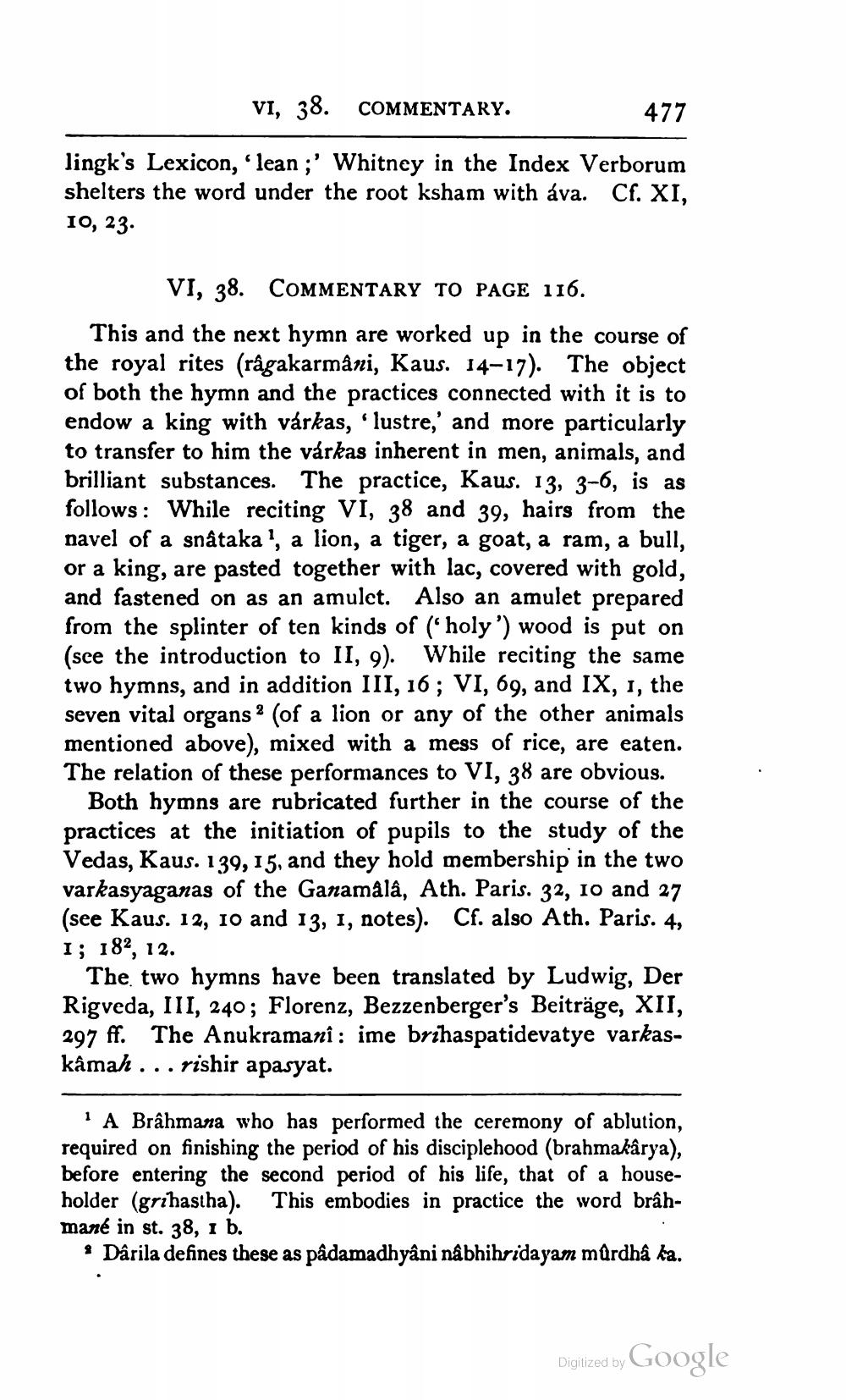________________
VI, 38. COMMENTARY.
477
lingk's Lexicon, 'lean ;' Whitney in the Index Verborum shelters the word under the root ksham with áva. Cf. XI, 10, 23.
VI, 38. COMMENTARY TO PAGE 116. This and the next hymn are worked up in the course of the royal rites (râgakarmâni, Kaus. 14-17). The object of both the hymn and the practices connected with it is to endow a king with várkas, 'lustre,' and more particularly to transfer to him the várkas inherent in men, animals, and brilliant substances. The practice, Kaus. 13, 3-6, is as follows: While reciting VI, 38 and 39, hairs from the navel of a snataka', a lion, a tiger, a goat, a ram, a bull, or a king, are pasted together with lac, covered with gold, and fastened on as an amulct. Also an amulet prepared from the splinter of ten kinds of ("holy ') wood is put on (sce the introduction to II, 9). While reciting the same two hymns, and in addition III, 16; VI, 69, and IX, 1, the seven vital organs (of a lion or any of the other animals mentioned above), mixed with a mess of rice, are eaten. The relation of these performances to VI, 38 are obvious.
Both hymns are rubricated further in the course of the practices at the initiation of pupils to the study of the Vedas, Kaus. 139, 15, and they hold membership in the two varkasyaganas of the Ganamâlâ, Ath. Paris. 32, 10 and 27 (see Kaus. 12, 10 and 13, 1, notes). Cf. also Ath. Paris. 4, 1; 182, 12.
The two hymns have been translated by Ludwig, Der Rigveda, III, 240; Florenz, Bezzenberger's Beiträge, XII, 297 ff. The Anukramani : ime brihaspatidevatye varkaskâmah ... rishir apasyat.
A Brâhmana who has performed the ceremony of ablution, required on finishing the period of his disciplehood (brahmakârya), before entering the second period of his life, that of a householder (grihastha). This embodies in practice the word brâhmané in st. 38, 1 b.
* Dârila defines these as pâdamadhyâni nâbhihridayam můrdha ka.
Digized by Google




